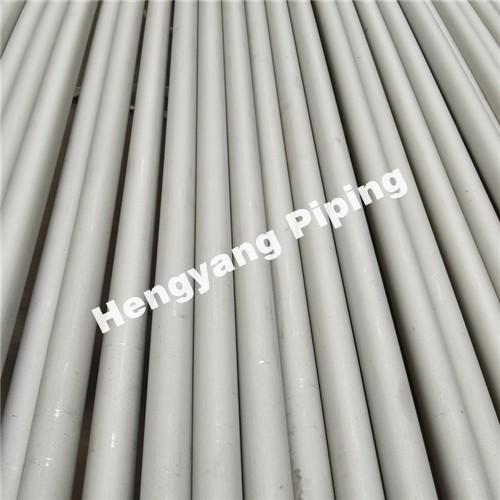Differences Between Stainless Steel 304 Versus Duplex Steel 2205
The branding strength of stainless steel is immense, as its name suggests. Its remarkable corrosion resistance comes from its composition, which includes 12% chromium combined with other elements. Stainless steel is categorized into five main classes: austenitic, ferritic, martensitic, duplex, and precipitation-hardening.
Austenitic stainless steel is widely used across various industries due to its versatility. Duplex stainless steel, on the other hand, combines nearly equal proportions of austenitic and ferritic stainless steel, resulting in a unique duplex microstructure. Grade 2205, a commonly used duplex stainless steel, offers a balance of strength and corrosion resistance.
Due to its superior properties, duplex stainless steel is extensively used in industries such as oil and gas and chemical processing. Grade 2205, in particular, is a popular choice for demanding applications.
Grade 304
Stainless Steel Grade 304 is the most commonly used austenitic stainless steel. It provides excellent corrosion resistance and can withstand extreme temperatures. Known for its mechanical strength, formability, and weldability, Grade 304 is widely utilized across a range of practical applications.
Grade 2205
Duplex Steel 2205 combines the unique properties of austenitic and ferritic stainless steels within its duplex microstructure. With a composition rich in chromium and molybdenum, it offers outstanding corrosion resistance and exceptional mechanical strength. Grade 2205 is highly resistant to stress corrosion cracking, making it ideal for applications requiring durability and reliability under demanding conditions.
Difference Between Grade 304 and 2205 Stainless Steel
The very basic difference between the two is grade 304 is austenitic stainless steel, whereas grade 2205 is duplex stainless steel. The chemical, physical and mechanical properties of grade 2205 are quite superior to grade 304.
- Grade 2205 offers double the yield strength of Grade 304.
- It demonstrates better fatigue stress performance compared to Grade 304.
- Grade 2205 provides exceptional resistance to cracking, crevice corrosion, pitting, and general corrosive environments.
- It is preferred for advanced product designs and demanding applications.
However, austenitic stainless steel also has distinct advantages:
- Austenitic stainless steel is versatile and widely used, serving as the backbone of the stainless steel industry.
- It exhibits superior plastic toughness compared to duplex stainless steel. However, duplex stainless steel is not recommended for use in temperatures above 300°C or below -50°C.
- While duplex stainless steel offers excellent properties, it is more expensive than austenitic stainless steel. Therefore, its use should be carefully evaluated based on application requirements.
Mechanical Properties
Grade 2205 outperforms Grade 304 in both tensile and yield strength. Additionally, duplex stainless steel, such as Grade 2205, offers superior thermal conductivity compared to austenitic stainless steel.
|
Property |
Grade 2205 |
Grade 304 |
|
Tensile Strength |
700 MPa |
515 MPa |
|
Proof Strength (0.2%) |
570 MPa |
205 MPa |
|
Hardness (Brinell, max) |
290 |
200 |
|
Elongation |
25% |
40% |
Applications
- Grade 2205:
Widely used in industries and equipment requiring high strength and corrosion resistance, including:
- Oil and gas industry
- Marine industry, especially for equipment exposed to high-chloride environments
- Pulp and paper industry
- Grade 304:
Extensively applied in industries requiring good formability and corrosion resistance, including:
- Food processing industries
- Domestic and commercial kitchenware
- Appliances and general-purpose applications







